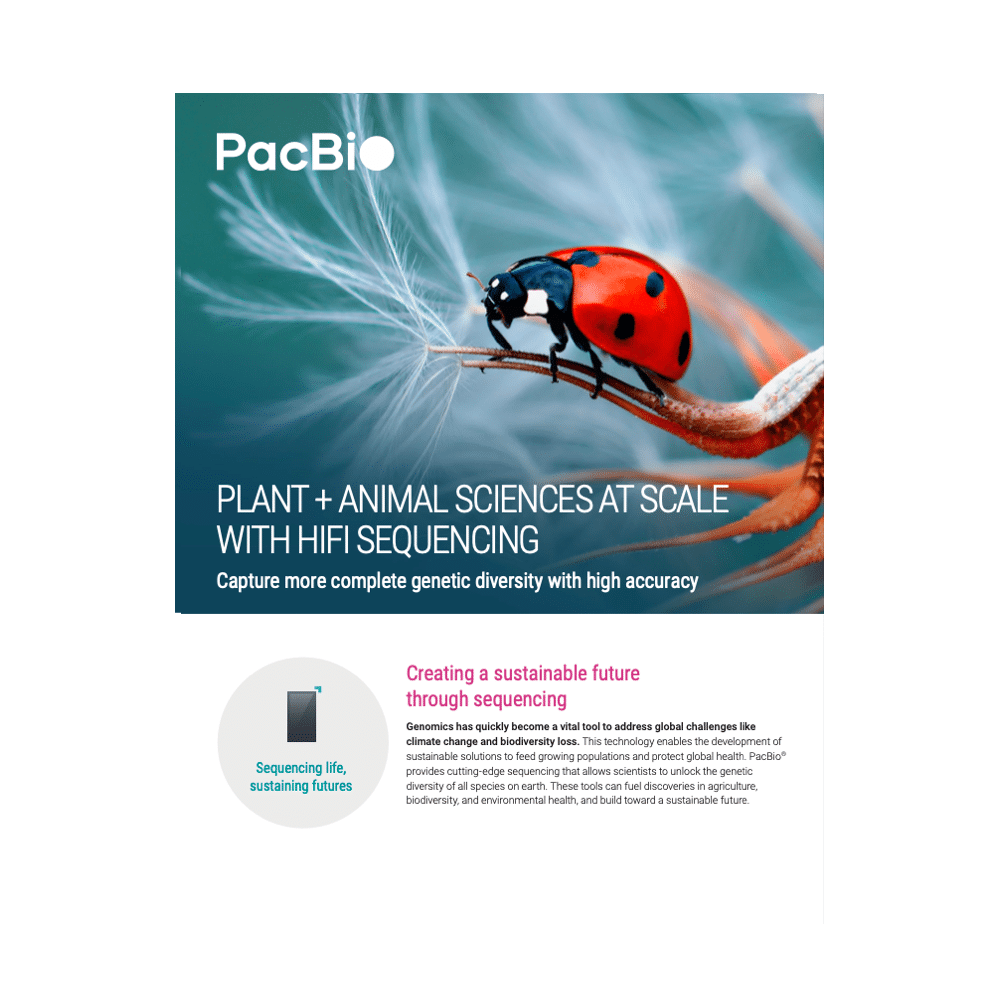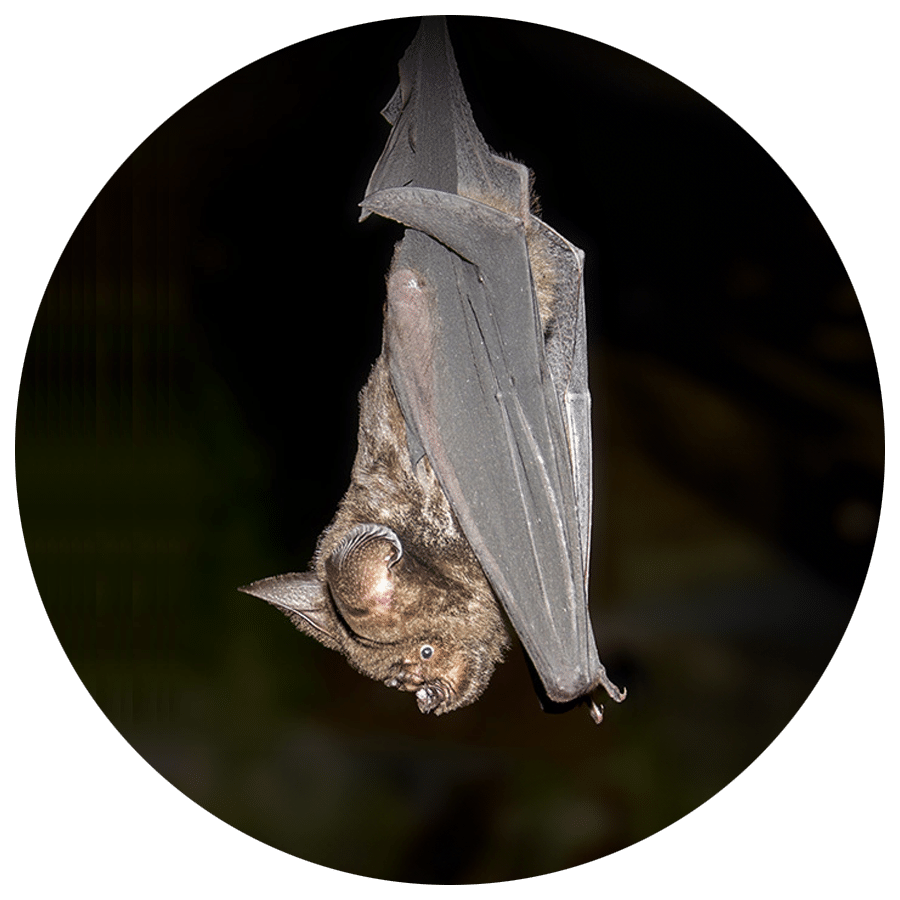Plant + animal genomics
Sequencing technology to capture biodiversity, advance agriculture, and maintain environmental health
Plant + animal genomics solutions
In the face of a changing climate and growing populations, highly accurate long-read sequencing technology gives plant and animal scientists access to actionable genomic insights that other technologies cannot provide.
Agrigenomics
Accelerate breeding programs and increase resilience to pests, disease, and climate challenges.
Biodiversity
Explore the biodiversity of populations, species and ecosystems to build a more detailed view of the biome.
Plant + animal biology
Address questions about evolution, development, gene expression, transcription regulation, and more.
Transforming plant and animal research with full-length and single-cell isoform sequencing
In this whitepaper, we discuss the features of full- length and single-cell isoform sequencing with the Iso- Seq method and their applications in plant and animal research. We show how combining the Iso-Seq method with Kinnex kits further increases throughput, making PacBio long reads a cost-effective RNA sequencing solution.
Plant + animal genomics in action
Brochure
Plant + animal sciences at scale with HiFi sequencing
Capture more complete genetic diversity with high accuracy


Genome wide detection and phasing of genetic and epigenetic variants from a single library prep
Simultaneously measure methylation by detecting 5mC at CpG sites.

Building haplotype-resolved pangenome databases for improved marker development
With third-generation sequencing tools, researchers have been able to better impute complex traits…

Getting the most out of your breeding program with sequencing
Three plant biologists talk about their journeys into sequencing plant genomes…
Explore
Did you know we have a library of articles, reports, papers, and videos related to plant + animal genomics?
PubMed article
Full-Length Transcriptome of the Great Himalayan Leaf-Nosed Bats (Hipposideros armiger) Optimized Genome Annotation and Revealed the Expression of Novel Genes
The great Himalayan leaf-nosed bat (Hipposideros armiger) is one of the most representative species of all echolocating bats and is an ideal model for studying the echolocation system of bats. An incomplete reference genome and limited availability of full-length cDNAs have hindered the identification of alternatively spliced transcripts, which slowed down related basic studies on bats’ echolocation and evolution. This study analyzed five organs from H. armiger for the first time using PacBio single-molecule real-time sequencing (SMRT).
Blog
High-quality genomes for a biodiverse Christmas
After last year’s humongous achievement of assembling the 100 Gb mistletoe genome, it is very exciting to see many more holiday associated species assembled by the Darwin Tree of Life Project. All of these leverage accurate HiFi sequencing to create high-quality, haplotype-resolved genomes, thereby allowing for a deeper understanding of the molecular mechanisms of Christmas.
Advantages of using HiFi sequencing for your plant + animal genomics research
Highly accurate genomic sequencing helps uncover genomic clues from the organisms that populate our world. Complex genomes and transcriptomes provide pathways to protect crop and livestock health and better understand plant and animal biology at a molecular level.
Here are some advantages of HiFi sequencing to support your plant and animal research:
- Build more complete, accurate, and phased reference genomes for all types of organisms
- Confidently call variants at every scale, including SNPs, structural variants, copy number variants, translocations, and homopolymer repeats
- Uncover new biology with Kinnex RNA kits that provides full-length, phased transcript sequence — profile isoforms and capture 5’ untranslated regions
- Reveal previously hidden regulatory mechanisms with epigenetic sequence information
Long-read sequencing technology enables applications that address global challenges through accurate and actionable genomic data.
Applications to fuel plant + animal genomics research
Whole genome sequencing
Assemble haplotype-resolved, more complete, and accurate de novo genomes and simultaneously detect methylation in the face of challenging complexity, such as high ploidy, high GC content, and highly repetitive sequences.
Structural variant calling
Resolve variants at every scale — from SNPs and INDELs to larger structural variants like copy number variations and translocations, even in complicated regions of the genome.
Targeted sequencing
Accurately detect and uncover variant types even in hard-to-reach regions of the genome to power genotyping studies, breeding programs, and more.
RNA sequencing
Uncover novel biology with full-length transcripts at scale with the Kinnex RNA kits. Profile isoforms and capture variants in 5’ UTRs for the data you need to build more accurate genome annotations.
Long-read sequencing helps answer biological questions across a broad range of plant + animal sciences
Break through the barriers of polyploidy and heterozygosity
Insect biology
Develop disease prevention methods and improve pest control
Crop improvements
Improve crop health, conduct trait selection, and enhance breeding efficiency
Animal health + breeding
Study patterns of inheritance, immunology and domestication
Environmental health
Identify the role of microbes in complex communities and characterize and monitor pathogens
Marine biodiversity
Explore ecosystems to study evolution and address the challenges of climate change
Conservation
Examine genomic diversity of species-at-risk for assisted reproduction, wildlife management, and sustainability
Long-read value for RNA applications
THIS IS YOUR MOMENT
Long reads at a lower cost and higher throughput. Highly accurate short reads. From the fullest picture to the finest detail, your moment of discovery is waiting.

